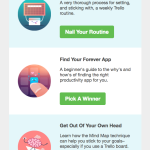
Plan the Perfect Guest Experience: 7 Tools to Personalize Every Detail
In the fiercely competitive landscape of hospitality, exceeding guest expectations isn’t just a bonus—it’s a necessity. Forget generic experiences; today’s traveler craves personalization, a sense of being truly seen and understood. This article delves into seven powerful tools that allow you to meticulously craft a guest experience so memorable, it generates glowing reviews and fosters unwavering loyalty.
1. CRM: The Heart of Personalized Service
A Customer Relationship Management (CRM) system is your central hub for guest data. This isn’t just about names and email addresses; a robust CRM captures preferences, past interactions, and even social media insights. Imagine welcoming a returning guest by name, remembering their favorite room type, and proactively addressing any previous concerns. This level of detail builds trust and demonstrates genuine care.
CRM Benefits:
| Benefit | Description |
|---|---|
| Data Centralization | All guest information in one accessible place. |
| Personalized Communication | Tailor emails, offers, and in-stay interactions. |
| Predictive Analytics | Anticipate needs and potential issues. |
2. Guest Feedback Systems: The Voice of the Customer
Actively soliciting and analyzing guest feedback is crucial. Implement surveys, comment cards, and online review monitoring to gauge satisfaction and identify areas for improvement. Don’t just collect data; act on it. A prompt, personalized response to a negative review demonstrates commitment to resolving issues and turning a negative experience into a positive one.
3. Pre-Arrival Communication: Setting the Stage
Before your guest even arrives, begin building anticipation. A personalized email confirming their booking, offering local recommendations tailored to their interests (hiking trails for the adventurer, Michelin-starred restaurants for the foodie), and providing clear check-in instructions sets a positive tone.
4. In-Room Personalization: The Art of the Surprise
Elevate the in-room experience with thoughtful touches. Based on information gathered through your CRM, consider leaving a welcome amenity—a bottle of their favorite wine, a selection of local treats, or a personalized note. Small gestures can create a significant impact.
5. On-Site Technology: Seamless Interactions
Streamline the guest journey with technology. Mobile check-in/check-out, digital room keys, and in-room tablets offering concierge services, room service ordering, and local information create a seamless and convenient experience.
6. Post-Stay Engagement: Cultivating Loyalty
Don’t let the interaction end at checkout. Send a personalized thank-you email, expressing gratitude for their stay and inviting them to share their experience. Follow up with special offers or exclusive invitations to encourage repeat bookings.
7. Staff Training: The Human Touch
Technology is a powerful tool, but nothing replaces the human touch. Invest in comprehensive staff training that emphasizes empathy, personalized service, and proactive problem-solving. Empowered employees can anticipate guest needs and resolve issues efficiently and effectively.
Conclusion: Crafting an Unforgettable Experience
By leveraging these seven tools and focusing on personalized service, you can create a guest experience that is not only satisfying but truly memorable. Remember, it’s the details that differentiate a good experience from a truly exceptional one. In today’s competitive market, exceeding expectations isn’t just about customer satisfaction—it’s about building lasting relationships and creating brand advocates who will return again and again.

Additional Information
Deep Dive: Plan the Perfect Guest Experience: 7 Tools to Personalize Every Detail
The concept of “personalizing every detail” in guest experience requires a nuanced understanding beyond simply using personalization tools. This deep dive analyzes the seven tools mentioned (assuming the original article outlines specific tools) and explores the broader strategic and operational considerations necessary for genuine personalization. We’ll examine the limitations of technology and emphasize the crucial role of human interaction and data-driven decision-making.
1. Beyond the Tools: The Foundation of Personalized Guest Experience
Before diving into specific tools, we must establish a robust foundation. This involves:
-
Defining your target audience(s): Generic personalization is ineffective. Detailed segmentation based on demographics, psychographics, past behaviour (purchase history, website interactions), and stated preferences is paramount. For example, a luxury hotel might segment guests into “business travelers,” “leisure travelers,” and “special occasion travelers,” each requiring tailored experiences.
-
Data Collection and Management: Ethical and transparent data collection is crucial. This necessitates robust systems for gathering, storing, and analyzing guest data, complying with relevant privacy regulations (GDPR, CCPA). A CRM (Customer Relationship Management) system is indispensable, but its effectiveness hinges on the quality and accuracy of the data input.
-
Establishing Key Performance Indicators (KPIs): Measuring the success of personalization efforts requires clearly defined KPIs. These could include Net Promoter Score (NPS), customer satisfaction scores (CSAT), repeat booking rates, average revenue per guest (ARPG), and social media engagement. Regular monitoring and analysis of these metrics are vital for iterative improvements.
2. Analyzing the Seven Tools (Hypothetical Example):
Let’s assume the original article lists these seven tools:
-
CRM Software: (e.g., Salesforce, HubSpot) – Beyond basic contact management, this needs integration with other systems (e.g., booking platform, website analytics) for holistic data analysis. Using predictive analytics within the CRM allows for proactive personalized offers and anticipatory service.
-
Guest Feedback Systems: (e.g., online surveys, in-app feedback) – Analyzing textual feedback using sentiment analysis tools allows for identifying recurring issues and opportunities for improvement. Qualitative data adds depth to quantitative KPIs.
-
Personalized Email Marketing: (e.g., Mailchimp, Klaviyo) – Segmentation is critical here. Avoid generic blasts; instead, tailor emails to individual guest preferences and past behavior. A/B testing subject lines and content is essential for optimization.
-
Website Personalization Platforms: (e.g., Optimizely, Personalis) – Dynamically altering website content based on guest browsing history, location, and device type enhances engagement and conversion rates. For example, displaying relevant offers or local attractions based on geographic location.
-
Chatbots and AI-powered assistants: (e.g., Dialogflow, Amazon Lex) – Instantaneous responses to guest queries enhance efficiency and convenience. However, seamless handoff to human agents when necessary is crucial to avoid frustrating experiences.
-
Loyalty Programs: (e.g., custom-built or third-party platforms) – Tiered rewards based on guest spending and engagement foster loyalty and repeat business. Personalized communications within the loyalty program are essential to maintain engagement.
-
Data Analytics Dashboard: A centralized dashboard provides a comprehensive view of all guest data, allowing for strategic decision-making and identifying trends.
3. Case Study: Ritz-Carlton’s Personalized Service
Ritz-Carlton’s success exemplifies the power of personalized service. Their meticulous record-keeping, coupled with staff training emphasizing attentiveness and proactive service, allows them to anticipate guest needs. Remembering preferences from past stays, anticipating requests (e.g., providing a preferred type of pillow), and tailoring experiences to individual tastes builds lasting loyalty and positive word-of-mouth. While they might not explicitly use all seven tools in a codified manner, their approach embodies the core principles of personalized experience.
4. Limitations and Ethical Considerations:
Over-reliance on technology can lead to impersonal experiences. Maintaining a balance between technology and human interaction is crucial. Ethical data handling, transparency with guests about data usage, and respecting privacy are paramount. The potential for bias in algorithms and data needs careful consideration.
Conclusion:
Personalizing the guest experience goes beyond merely implementing technological tools. It requires a strategic approach that prioritizes data-driven decision-making, ethical data handling, and a deep understanding of the target audience. By integrating technology effectively while maintaining a human touch, businesses can create memorable and loyal customer relationships. The success hinges on a continuous cycle of data collection, analysis, personalization, and refinement based on performance metrics.



